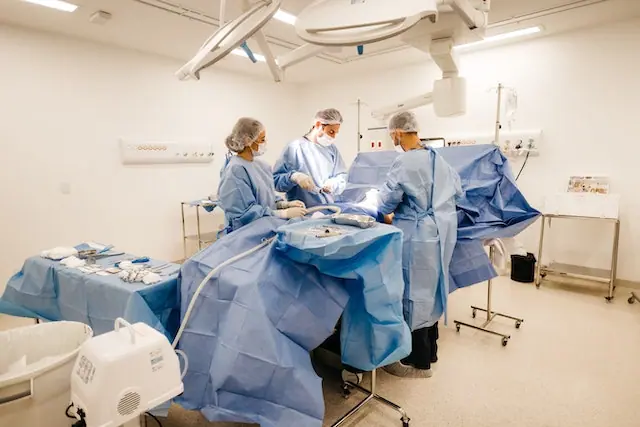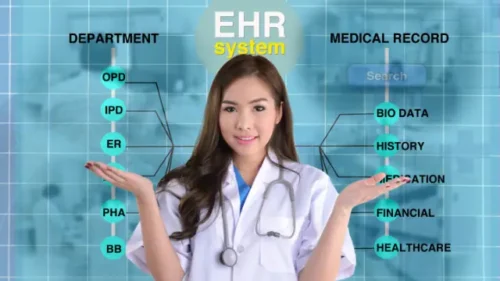
How Medical Facilities Can Improve Operations
Healthcare facilities serve as the epicenter of wellness, playing an essential role in nurturing, preserving, and reviving the health of communities. The functionality and efficiency of these institutions have a profound impact on the standard of care offered, patient satisfaction, and overall organizational image. In today’s evolving healthcare climate, there’s an increasing emphasis on elevating operational practices through consistent innovation and improvement. In this article, you will explore strategies and practices that can aid medical facilities in enhancing or improve their operations.
1. Effective Communication
Communication serves as the lifeline in medical facilities. Transparent and timely communication among healthcare teams enhances collaborative care, reduces errors, and fosters a positive work environment. In turn, this can result in better patient outcomes and greater patient satisfaction.
To foster effective communication, medical facilities should consider regular team meetings, transparent reporting systems, and establishing open lines of communication at all levels. Moreover, training programs to improve interpersonal communication skills can be a valuable investment.
2. Maximizing Space Utilization
The value of space in healthcare establishments can’t be overstated. Smart use of space has the potential to enhance or improve workflow and streamline operations. This includes judiciously planned physical spaces that cut down on needless movement and allow quick and easy access to vital supplies and equipment.
The medical facility can also employ healthcare storage solutions like those provided by Innerspace, which can assist medical institutions in maximizing their storage efficiency, leading to a more productive work environment. Their diverse portfolio of storage solutions, including both mobile and fixed options, is designed to cater to the distinct needs of various departments.
3. Leveraging Contemporary Technology
In our digital world, technology has become an integral part of our daily lives, the healthcare sector included. Cutting-edge technology can significantly elevate the operational efficiency of healthcare facilities. For instance, digitized health records can overhaul the documentation system, cut down on errors, and ensure crucial patient data is available at a moment’s notice.
Moreover, technological progress in medical imaging and telemedicine can improve diagnostic and treatment methods, resulting in better patient outcomes. However, integrating these technologies is not just about investment; it also demands a dedication to staff education and upgrading existing systems to accommodate these advancements.
4. Streamlined Administrative Processes
Administrative tasks, though critical, often consume a considerable amount of time and resources in medical facilities. Streamlining these processes can free up staff to focus more on direct patient care, enhancing efficiency and satisfaction.
Streamlining could mean adopting electronic billing systems, simplifying appointment scheduling procedures, or reducing paperwork through digitalization. Each facility needs to identify its administrative bottlenecks and create strategies to overcome them. A leaner administration can lead to more effective and patient-focused care.
5. Prioritizing Patient Experience
Patients are the lifeblood of any healthcare facility. A positive patient experience often translates to improved operational effectiveness. When services are patient-focused, they are not only clinically successful but also emotionally gratifying for patients.
Enhancing the patient experience might involve measures like reducing wait times, making the hospital ambiance more welcoming, respecting patient choices, and actively engaging them in their healthcare journey. These steps can boost patient satisfaction, improve health outcomes, and generate positive referrals for the facility.
6. Implementing Electronic Health Records (EHRs)
Electronic Health Records (EHRs) are essential in healthcare settings. EHRs amalgamate all patient data into one easily accessible platform, thus enabling medical personnel to retrieve necessary patient information swiftly.
EHRs make record-keeping easier and also mitigate the risk of errors tied to manual documentation. They foster better coordination and communication among healthcare teams, which in turn leads to more efficient and personalized patient care.
7. Promoting Staff Training and Skill Development
The skill level and proficiency of staff members are significant factors affecting operational efficiency in healthcare facilities. Therefore, consistent training and development initiatives are crucial to keep the staff up-to-date with the latest best practices and technological progress.
These programs should also emphasize soft skills like interpersonal communication, which are as critical as technical skills in a healthcare setting. When staff are well-prepared and self-assured, they are more likely to deliver superior care, leading to better patient outcomes and satisfaction.
8. Streamlining Inventory Management
The importance of inventory management in healthcare operations cannot be overstated. Ensuring the availability of necessary supplies at the right time can be critical to patient outcomes. Establishing an efficient inventory management system can guarantee essential supplies are at hand when needed while also curbing expenses tied to excess stock.
Modern inventory management systems can provide real-time insights on stock levels, automate reordering processes, and monitor usage patterns. Such systems streamline operations and also offer critical data for informed decision-making.
9. Capitalizing on Telemedicine
Telemedicine has transformed the delivery of healthcare services. Enabling remote consultations between healthcare providers and patients not only enhances healthcare accessibility, particularly for remote populations, but also alleviates pressures on physical healthcare facilities.
Although telemedicine won’t fully replace traditional face-to-face consultations, it is a potent tool for routine follow-ups, preliminary screenings, and providing care to those with mobility issues. It represents another opportunity for healthcare facilities to boost efficiency and widen their service outreach.
10. Upholding Quality Control and Promoting Continuous Improvement
Regular auditing, patient feedback, and staff insights form the cornerstone of quality control and continuous improvement in healthcare operations. By identifying areas that need enhancement, these measures offer valuable insights for operational improvement.
Embracing a culture of continuous improvement allows healthcare facilities to periodically reassess their operational practices and make necessary adjustments.
11. Fostering a Safety-First Culture
Safety is a critical aspect of healthcare. Establishing a safety-oriented culture entails creating an environment where staff feels confident in reporting errors or safety issues without fear of recrimination. Such transparency encourages learning and improvement, leading to fewer incidents and streamlined operations.
In addition, strategies like routine safety drills, easily accessible safety guidelines, and investment in safe and ergonomically designed equipment can reinforce a culture of safety.
Conclusion
Operational efficiency in healthcare facilities is not a destination; it’s a continuous voyage. It encompasses all facets of the facility, from communication and technology adoption to space optimization and fostering a safety culture. While the path to improved operations may pose challenges, the resultant enhanced patient outcomes, increased satisfaction, and overall success of the facility make the journey worthwhile.
By employing the strategies discussed in this article, healthcare facilities can make significant progress towards improve their operations, laying the groundwork for more effective and efficient patient care.




